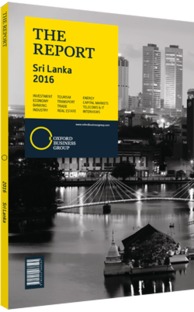More demand for high-end housing brings rewards for contractors in Sri Lanka
Despite a slight slowdown in building activity in Sri Lanka in 2015 – due primarily to uncertainty around presidential and parliamentary elections in January and August, respectively – rising demand for residential real estate points to long-term growth in the construction sector in the coming years. In a report released in November 2015, Asia Securities, a Colombo-based equities brokerage, cited rising household incomes and cheaper credit as key factors behind a medium-term shift in construction sector growth.
According to the report, the construction market will increasingly rely on private residential projects as opposed to government expenditure on infrastructure. “Since the country opened up in 2009-10, the luxury residential market has accounted for a considerable amount of construction activity,” Sunil Subramanian, head of transactions at Jones Lang LaSalle’s (JLL) Colombo office, told OBG in October 2015. “This is still the case today. Roughly 3000-3500 new luxury units are under way here, mostly in Colombo.”
In Context
Sri Lanka’s construction sector has grown rapidly since the country emerged from civil war in 2009. In 2014 the sector posted growth of 20.2%, according to NDB Securities (NDBS), a Sri Lanka-based brokerage, up from 14.4% in 2013, but down slightly from 21.6% in 2012. Since 2009 the sector has posted average annual growth in excess of 14%, compared to GDP growth of 7% over the same period.
High-end residential development has accounted for a considerable percentage of this expansion, with JLL estimating that as of mid-2014 around 3300 luxury and upper-mid units had been supplied since 2005, with less than half of these completed. An estimated 98% of the finished properties had been sold, while just 57% of units in projects that were still under construction had been purchased as of mid-2014.
High Demand
Demand for luxury residential property in recent years has been driven by a mix of high-net-worth resident Sri Lankans, wealthy non-resident Sri Lankans, and foreign investors, who see the nation as a desirable place to live and a good investment. According to data from the Central Bank of Sri Lanka, remittances into the country from non-resident Sri Lankans more than doubled from 2009 through 2014, from around $3.3bn to $7bn (see Economy chapter).
A significant percentage of this figure went towards real estate acquisition. “Just after the war ended, a large number of high-end apartments went up quickly around Colombo, and almost all of them were purchased rapidly,” Sidath Kalyanaratne, the assistant vice-president and head of research at NDBS, told OBG. “This influx, which was driven mostly by Sri Lankans living abroad, can be understood as a market correction after a long period of very little activity. It looks set to continue for some time still.”
Impact On Sector
The growth in the luxury residential segment bodes well for the real estate and construction sectors. Local contractors and raw material suppliers are expected to benefit the most. According to data from Asia Securities, cement accounts for 22% of the cost of constructing a housing unit in Sri Lanka, while timber accounts for 16% and iron and steel make up 14%. As such, Sri Lanka’s cement market is expected to grow considerably, despite an over-reliance on imported supply.
The construction sector is also poised to benefit from a shift to larger residential units. From 2007 to 2013, rising incomes led many locals to build larger housing units than in previous years. According to Asia Securities, in 2013 around 47% of Sri Lankans lived in a 750-sq-foot (or larger) unit, compared to just 36% half a decade prior. With incomes expected to rise, larger units are increasingly the norm in the market. With this in mind, and taking into account investments by resident and non-resident Sri Lankans alike, the construction sector is well positioned to benefit from continued activity in the high-end residential property segment for years to come.
You have reached the limit of premium articles you can view for free.
Choose from the options below to purchase print or digital editions of our Reports. You can also purchase a website subscription giving you unlimited access to all of our Reports online for 12 months.
If you have already purchased this Report or have a website subscription, please login to continue.

